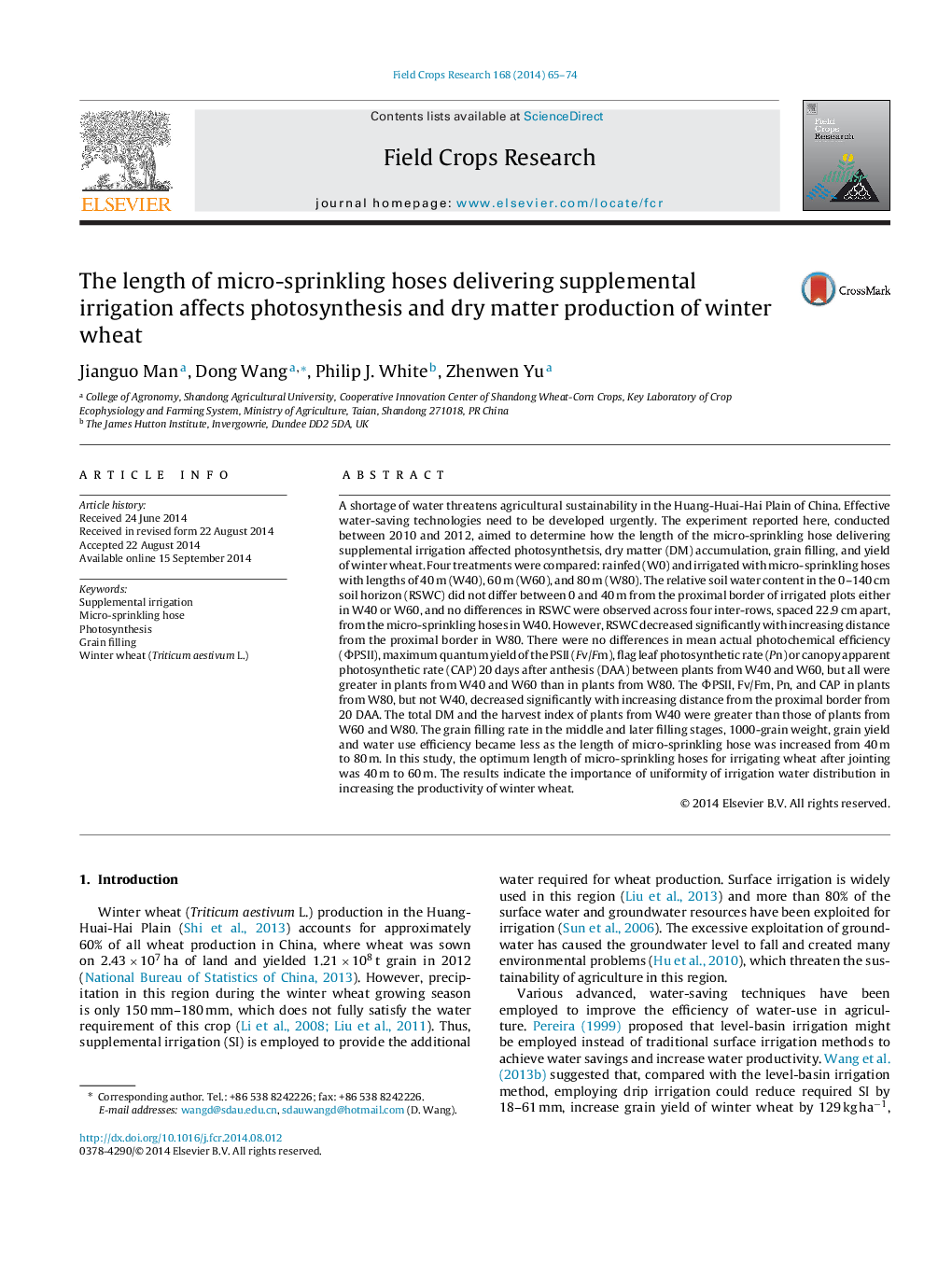| Article ID | Journal | Published Year | Pages | File Type |
|---|---|---|---|---|
| 4509971 | Field Crops Research | 2014 | 10 Pages |
Abstract
A shortage of water threatens agricultural sustainability in the Huang-Huai-Hai Plain of China. Effective water-saving technologies need to be developed urgently. The experiment reported here, conducted between 2010 and 2012, aimed to determine how the length of the micro-sprinkling hose delivering supplemental irrigation affected photosynthetsis, dry matter (DM) accumulation, grain filling, and yield of winter wheat. Four treatments were compared: rainfed (W0) and irrigated with micro-sprinkling hoses with lengths of 40 m (W40), 60 m (W60), and 80 m (W80). The relative soil water content in the 0-140 cm soil horizon (RSWC) did not differ between 0 and 40 m from the proximal border of irrigated plots either in W40 or W60, and no differences in RSWC were observed across four inter-rows, spaced 22.9 cm apart, from the micro-sprinkling hoses in W40. However, RSWC decreased significantly with increasing distance from the proximal border in W80. There were no differences in mean actual photochemical efficiency (ΦPSII), maximum quantum yield of the PSII (Fv/Fm), flag leaf photosynthetic rate (Pn) or canopy apparent photosynthetic rate (CAP) 20 days after anthesis (DAA) between plants from W40 and W60, but all were greater in plants from W40 and W60 than in plants from W80. The ΦPSII, Fv/Fm, Pn, and CAP in plants from W80, but not W40, decreased significantly with increasing distance from the proximal border from 20 DAA. The total DM and the harvest index of plants from W40 were greater than those of plants from W60 and W80. The grain filling rate in the middle and later filling stages, 1000-grain weight, grain yield and water use efficiency became less as the length of micro-sprinkling hose was increased from 40 m to 80 m. In this study, the optimum length of micro-sprinkling hoses for irrigating wheat after jointing was 40 m to 60 m. The results indicate the importance of uniformity of irrigation water distribution in increasing the productivity of winter wheat.
Related Topics
Life Sciences
Agricultural and Biological Sciences
Agronomy and Crop Science
Authors
Jianguo Man, Dong Wang, Philip J. White, Zhenwen Yu,
